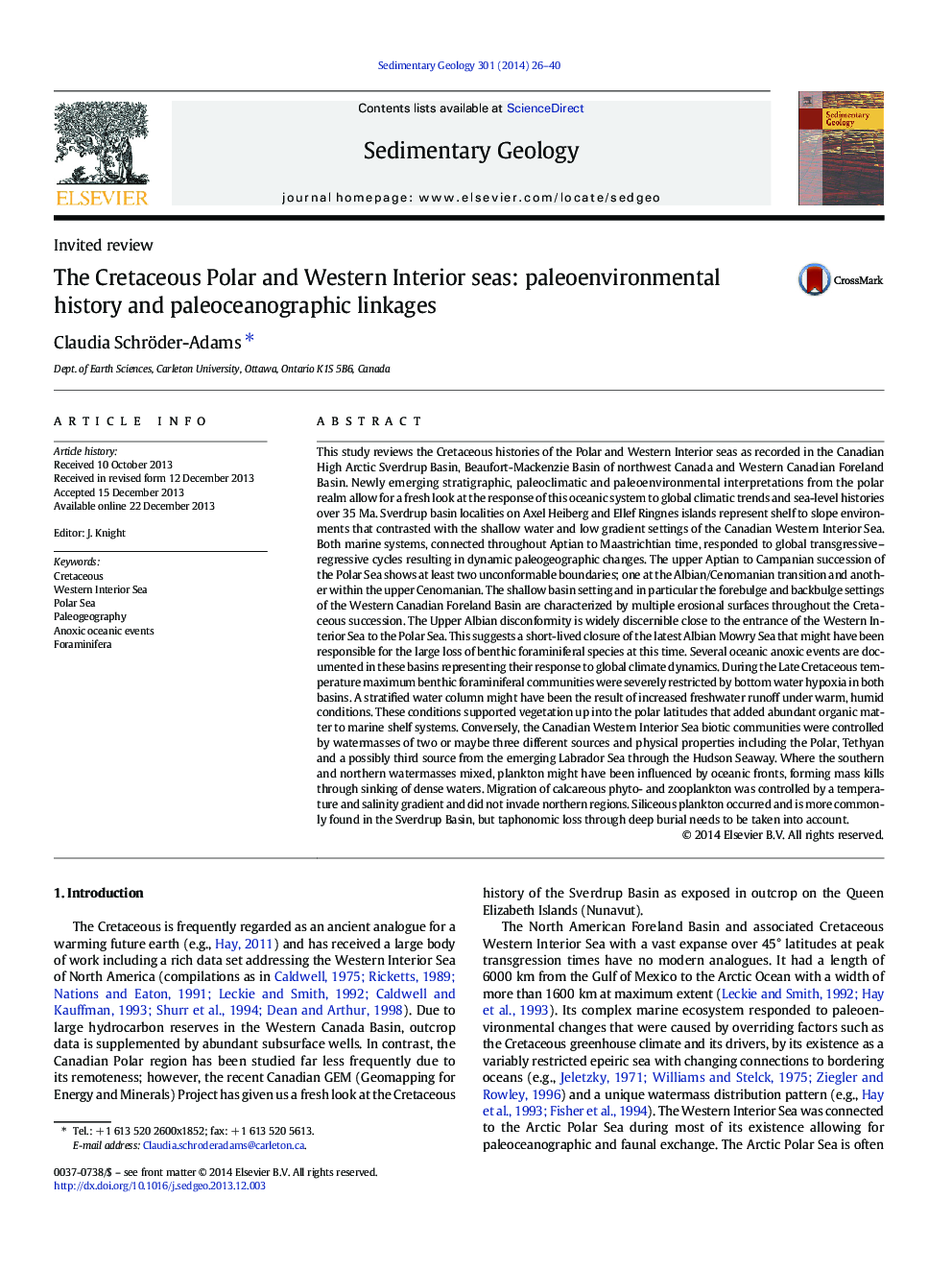| کد مقاله | کد نشریه | سال انتشار | مقاله انگلیسی | نسخه تمام متن |
|---|---|---|---|---|
| 4689418 | 1636062 | 2014 | 15 صفحه PDF | دانلود رایگان |
This study reviews the Cretaceous histories of the Polar and Western Interior seas as recorded in the Canadian High Arctic Sverdrup Basin, Beaufort-Mackenzie Basin of northwest Canada and Western Canadian Foreland Basin. Newly emerging stratigraphic, paleoclimatic and paleoenvironmental interpretations from the polar realm allow for a fresh look at the response of this oceanic system to global climatic trends and sea-level histories over 35 Ma. Sverdrup basin localities on Axel Heiberg and Ellef Ringnes islands represent shelf to slope environments that contrasted with the shallow water and low gradient settings of the Canadian Western Interior Sea. Both marine systems, connected throughout Aptian to Maastrichtian time, responded to global transgressive–regressive cycles resulting in dynamic paleogeographic changes. The upper Aptian to Campanian succession of the Polar Sea shows at least two unconformable boundaries; one at the Albian/Cenomanian transition and another within the upper Cenomanian. The shallow basin setting and in particular the forebulge and backbulge settings of the Western Canadian Foreland Basin are characterized by multiple erosional surfaces throughout the Cretaceous succession. The Upper Albian disconformity is widely discernible close to the entrance of the Western Interior Sea to the Polar Sea. This suggests a short-lived closure of the latest Albian Mowry Sea that might have been responsible for the large loss of benthic foraminiferal species at this time. Several oceanic anoxic events are documented in these basins representing their response to global climate dynamics. During the Late Cretaceous temperature maximum benthic foraminiferal communities were severely restricted by bottom water hypoxia in both basins. A stratified water column might have been the result of increased freshwater runoff under warm, humid conditions. These conditions supported vegetation up into the polar latitudes that added abundant organic matter to marine shelf systems. Conversely, the Canadian Western Interior Sea biotic communities were controlled by watermasses of two or maybe three different sources and physical properties including the Polar, Tethyan and a possibly third source from the emerging Labrador Sea through the Hudson Seaway. Where the southern and northern watermasses mixed, plankton might have been influenced by oceanic fronts, forming mass kills through sinking of dense waters. Migration of calcareous phyto- and zooplankton was controlled by a temperature and salinity gradient and did not invade northern regions. Siliceous plankton occurred and is more commonly found in the Sverdrup Basin, but taphonomic loss through deep burial needs to be taken into account.
Journal: Sedimentary Geology - Volume 301, 15 March 2014, Pages 26–40
